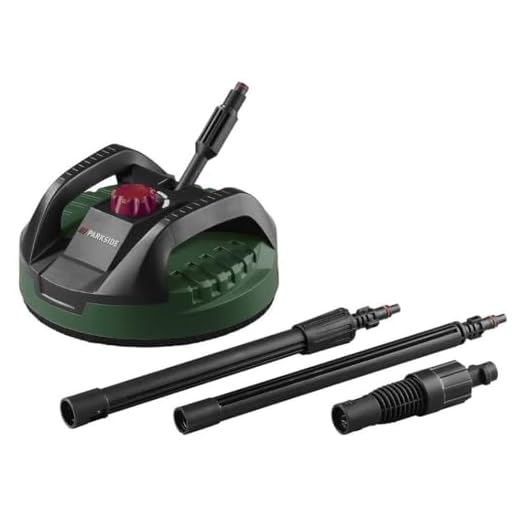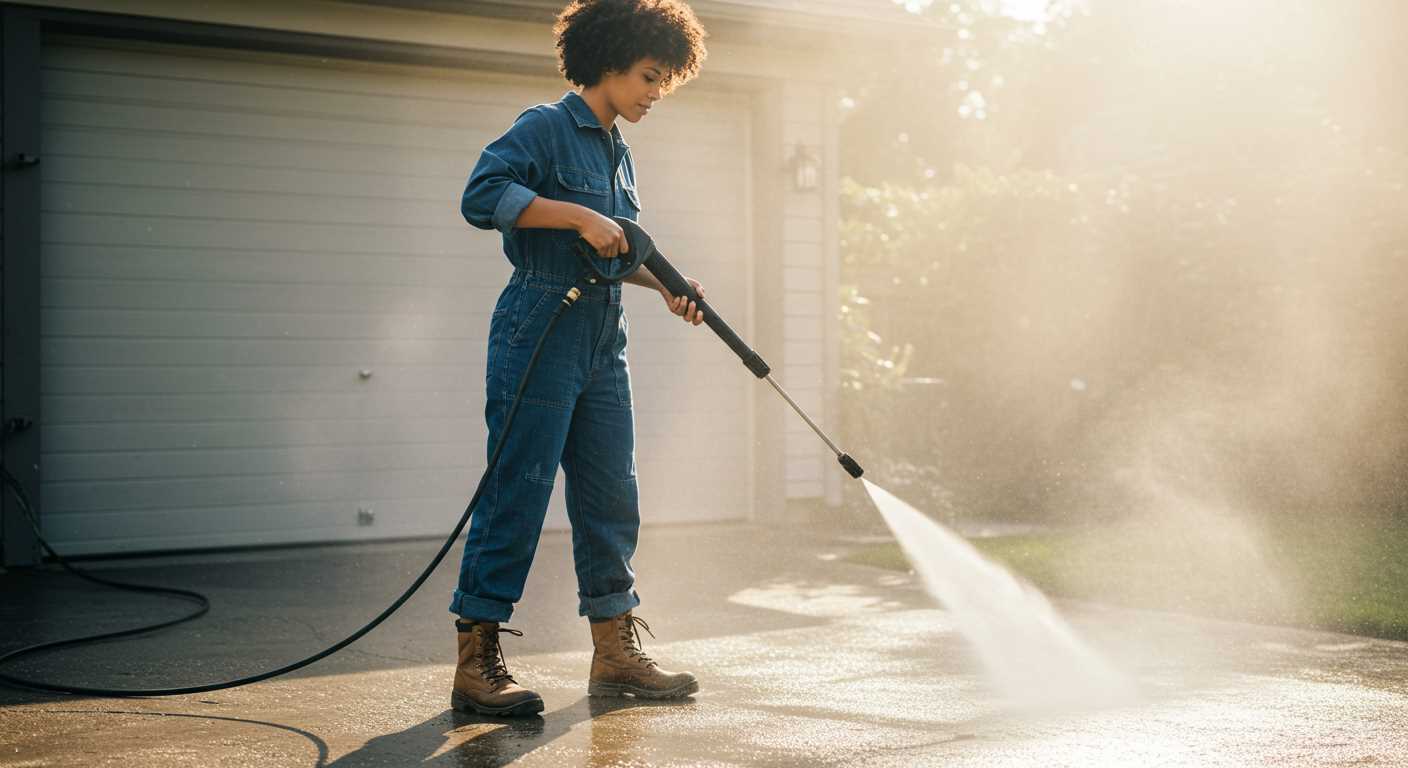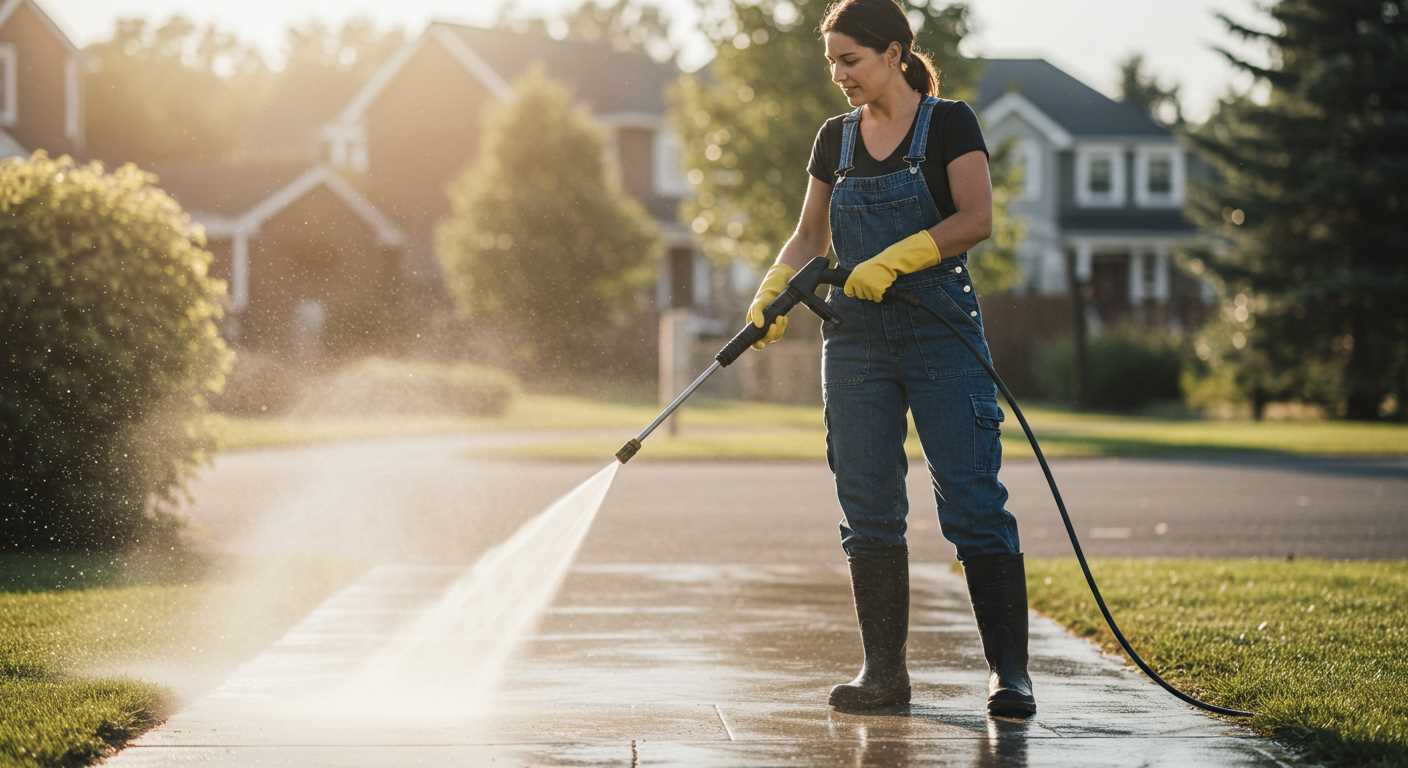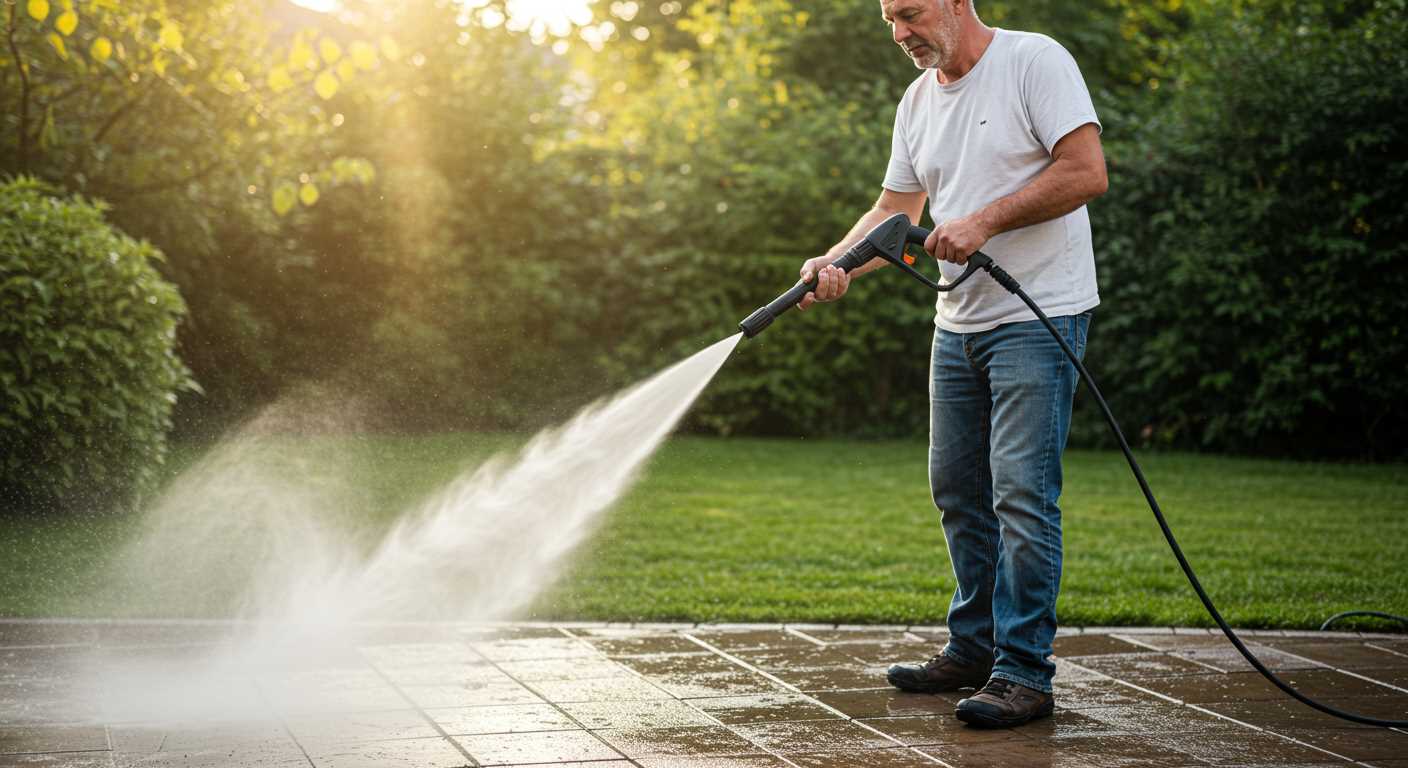



If you want to achieve remarkable results with a high-performance cleaning unit, the key lies in understanding the right techniques and settings tailored for your specific surfaces. Adjusting the nozzle to a suitable spray pattern can significantly impact the effectiveness of your cleaning efforts. For instance, a 30-degree nozzle is ideal for washing vehicles, while a 0-degree nozzle delivers intense power for removing stubborn stains on driveways or patios.
Before starting, ensure you have all necessary accessories at hand, such as detergent suitable for your cleaning task, a surface cleaner attachment for larger areas, and a brush for intricate detailing. When you engage with the equipment, remember to commence with low pressure to avoid any damage to delicate surfaces. Gradually increase the intensity as you gauge the response of the material being cleaned.
While operating, keep the spray wand at a consistent distance from the surface–typically around 30 centimetres. This maintains optimum pressure while preventing potential harm. It’s essential also to employ sweeping motions rather than direct aiming to achieve uniform results. Sticking to these guidelines ensures you get the most out of your device, translating into time saved and superior cleanliness.
Selecting the Right Nozzle for Your Cleaning Task
Choosing the correct nozzle is fundamental for achieving optimal results. Each nozzle type serves a specific function and ensures effective cleaning without causing damage.
The 0-degree nozzle delivers a concentrated stream, perfect for stubborn stains on hard surfaces like concrete or metal. However, be cautious when using it, as the intensity can damage softer materials.
For versatility, the 15-degree nozzle works well on tougher surfaces while still being safe for most materials. It’s ideal for removing mildew and grime from patios and outdoor furniture.
If you’re dealing with dirt that requires gentle attention, opt for the 25-degree nozzle. This is suitable for general cleaning tasks, such as washing down vehicles or garden equipment.
Lastly, the 40-degree nozzle provides a wide spray pattern, making it suitable for delicate surfaces, including painted walls and wooden furniture. This nozzle ensures a soft touch while still getting the job done.
Be mindful of the surface material and the type of dirt when selecting a nozzle, as this choice influences both cleaning efficiency and safety. Having a variety of nozzles on hand will allow you to tackle various cleaning tasks effectively.
Preparing Your Surface Before Cleaning
Clear the area of any debris, furniture, and obstacles. This prevents damage to items and ensures safe movement while working. Sweep or rake loose dirt, leaves, and gravel for a clean starting point.
Inspect the Surface
Examine the area carefully. Look for cracks, loose paint, or unstable structures. If you find any weaknesses, consider repairing them before proceeding. This avoids further damage during the cleaning process.
Pre-Wash Treatment

For surfaces with heavy stains or grime, apply a pre-wash solution before rinsing. Choose a cleaner suitable for the material–wood, concrete, or metal. Allow it to dwell for the recommended time to enhance effectiveness.
Connecting the Cleaning Device to a Water Source
Ensure a secure link between the device and a reliable water supply. Start by selecting a suitable hose, typically the garden variety, capable of withstanding a minimum of 10 bar pressure. Check the fittings to confirm compatibility with the machine’s water intake port. For optimal performance, choose a hose length no greater than 15 meters to maintain pressure consistency.
Fitting the Hose
Attach one end of the hose to the water tap, ensuring a snug fit to prevent leaks. When connecting to the device, insert the hose into the water inlet valve until you hear a click, indicating proper placement. Always confirm that the connection is tight, using a wrench if necessary, but be cautious not to overtighten, as this could damage the fittings.
Water Supply Requirements
Verify that the water source has a minimum flow rate of 5 litres per minute for effective operation. If the supply is insufficient, consider using a water butt or storage tank with a pump to provide adequate pressure. It’s also advisable to use a filter at the water intake to prevent debris from entering the system, which could impair functionality over time.
| Parameter | Requirement |
|---|---|
| Hose Length | Up to 15 meters |
| Minimum Pressure | 10 bar |
| Minimum Flow Rate | 5 litres per minute |
After establishing all connections, turn on the water supply slowly. Check for leaks at each junction and ensure the unit is primed correctly before commencing any cleaning tasks.
Adjusting Pressure Settings for Different Surfaces
Choose the correct pressure level to safeguard various materials. For delicate surfaces, such as painted wood or old stone, set lower pressure–typically around 1100 to 1500 PSI. Use this gentle approach to prevent damage.
For tougher surfaces like concrete or unpainted brick, increase the pressure to between 2000 and 3000 PSI. This range effectively removes dirt and grime. Always test a small area first to gauge the impact of the higher pressure.
Common Surface Adjustments
- Wood: 1200 – 1500 PSI
- Vinyl Siding: 1300 – 1600 PSI
- Concrete: 2500 – 3000 PSI
- Bricks: 2000 – 2500 PSI
- Glass: 1000 – 1300 PSI
After each adjustment, observe the cleaning results. If dirt persists, momentarily increase the pressure further, but exercise caution to avoid surface damage. Regularly read the machine’s manual for specific recommendations regarding pressure settings, as they can differ between models.
Additional Tips
- Consider the nozzle type when adjusting. A wider spray pattern may reduce pressure impact, while a narrower pattern increases it.
- Keep the spray at least 12 inches from the surface to minimise potential damage.
- Always wear safety gear, including goggles, to shield against possible debris.
Fine-tuning pressure levels is key to achieving efficient cleaning results while preserving surface integrity. Taking a cautious approach saves time and prevents costly mistakes.
Techniques for Safe and Efficient Cleaning
Before starting your cleaning tasks, always wear appropriate protective gear, including safety goggles and gloves. This ensures your safety against dirt and debris. Maintain a safe distance from the surface you are cleaning; generally, around 30 cm is a good guideline. It’s vital to angle the nozzle down, as this helps to avoid any spray rebound towards yourself.
Managing Water Flow and Mobility

While working, keep the unit moving to prevent damage to the surfaces. A steady motion not only enhances the cleaning action but also prevents etching or stripping away paint or sealants. If you encounter stubborn stains, it may be beneficial to pause and adjust your technique instead of staying in one spot too long.
Utilising Cleaning Solutions
Incorporating specially formulated cleaning solutions can drastically improve results. Apply these detergents in accordance with manufacturer recommendations, ensuring they are compatible with the equipment. Allow the solution to dwell on the surface for the prescribed duration to maximise the cleaning effect before rinsing with clear water. Be cautious when working on delicate surfaces; always test a small area first to prevent damage.
Maintenance Tips for Your Karcher Pressure Washer

Regularly check the water inlet filter for debris. A clean filter prevents flow restrictions and optimises performance. Simply unscrew it from the inlet and rinse under clean water to maintain unobstructed water flow.
Inspect and Clean the High-Pressure Hose
Examine the high-pressure hose for signs of wear and tear. Look for cracks or abrasions that could lead to leaks. Clean the hose after each use to remove any dirt or detergent residues. Store it properly, coiled loosely to avoid kinks that may damage it over time.
Motor and Pump Care
After extended use, allow the motor to cool down before storing the device. Regularly check the oil level if the equipment is equipped with a pump that requires oil. Change the oil as specified in the product manual to keep the pump running smoothly. Use a stabiliser when storing for long periods to prevent fuel degradation in petrol models.
Common Mistakes to Avoid When Using a High-Pressure Cleaner
Neglecting to read the product manual leads to misuse and potential damage. Each model has specific guidelines for operation that can prevent frustration and costly repairs.
Choosing the wrong nozzle can cause damage to surfaces or lead to ineffective cleaning. Always match the nozzle type with the surface being cleaned for optimal results.
Forgetting to clear the area of obstacles can hinder the cleaning process. Take a moment to remove furniture, plants, and other items to ensure a thorough job.
Ignoring proper distance from the surface can result in unwanted gouges or damage. Maintain an appropriate distance, usually 2 to 4 feet, depending on the pressure and surface type.
Failing to check water supply can disrupt operation. Ensure a consistent flow and pressure prior to initiating the machine to avoid interruptions.
Overlooking safety gear is a frequent mistake; always wear gloves, goggles, and sturdy footwear to protect against debris and chemicals.
Neglecting routine maintenance post-operation can shorten the lifespan of the equipment. Cleaning the filters, checking hoses, and ensuring proper storage will keep the machine functioning well.
Lastly, assuming that more pressure equals better cleaning can be misleading. Adjust the settings according to the task at hand to achieve effective results without damage.
Where to Find Helpful Video Tutorials for Karcher Models
Look for resources on YouTube where various channels provide step-by-step guides on operating different Karcher equipment. Popular channels like “DIY with Chris” and “Cleaning Guru” often showcase real-time examples of various models.
- Visit the official Karcher website, which features an extensive library of instructional content and demonstrations tailored to their product range.
- Check social media platforms, especially Facebook and Instagram. Many users share their personal experiences and tips through quick videos or live sessions.
- Online forums and communities, such as Reddit’s r/cleaning, offer valuable insights from experienced users who often share links to useful content.
Consider looking into manufacturer-specific user groups on platforms like Facebook. Members frequently post helpful video resources and engage in knowledge-sharing about various Karcher models.
Lastly, don’t underestimate training sessions at local home improvement stores. These often include practical demonstrations, allowing you to see the equipment in action and receive guidance from knowledgeable staff.









